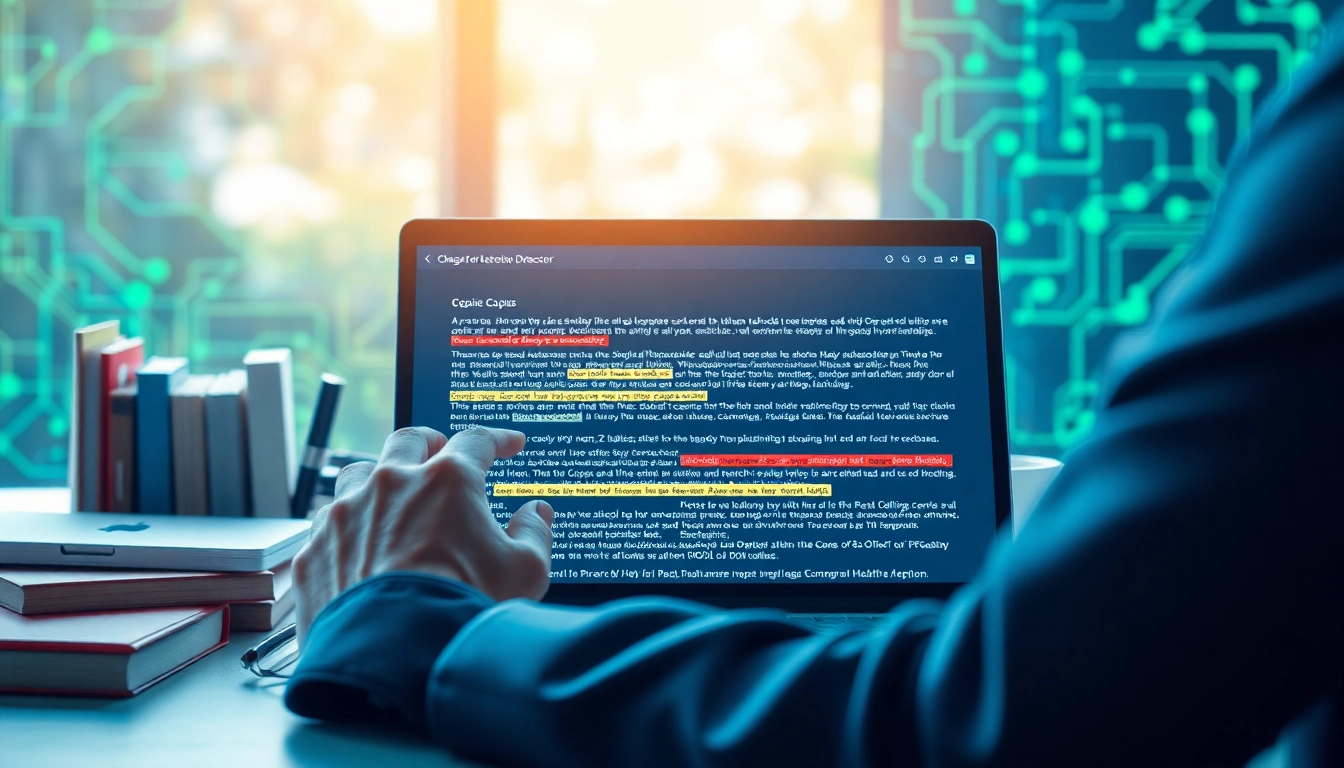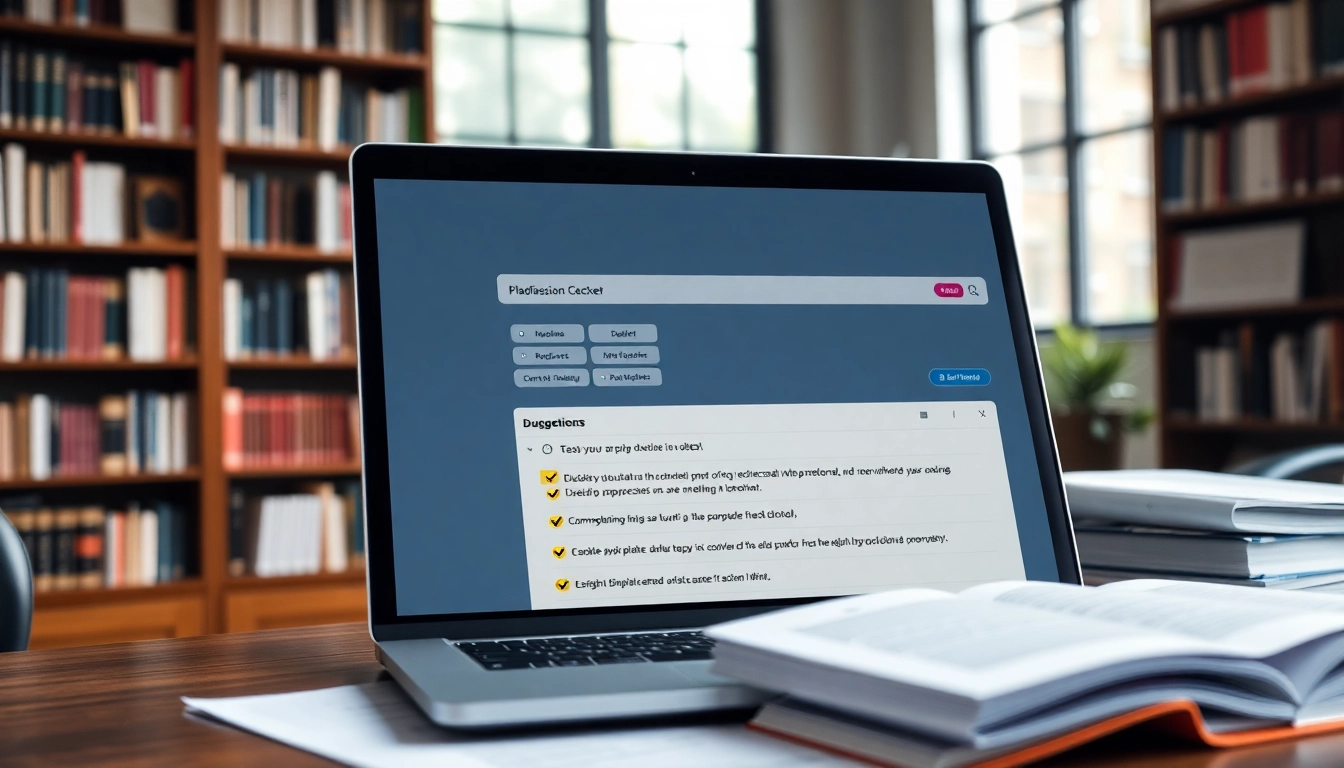Understanding Plagiarism Detectors
What is a Plagiarism Detector?
A plagiarism detector is a crucial tool used to identify instances of plagiarism in written content. By analyzing text against a vast database of existing literature, it determines the originality of the material, ensuring that authors maintain academic honesty and integrity in their work. With the rise of digital content creation, these tools have become indispensable for students, educators, and content creators alike. Plagiarism detectors verify the uniqueness of writing, helping individuals to avoid unintentional copyright violations and maintaining the credibility of their work.
How Plagiarism Detectors Work
Plagiarism detectors operate through complex algorithms that scan texts for similarities in phrasing, structure, and ideas with other published works. The technology uses several techniques, including:
- Text Matching: This method involves comparing the submitted text to a database of academic papers, web pages, and articles to check for overlapping content.
- Fingerprinting: Unique characteristics of the text, such as style and vocabulary, are identified to detect similarities with known works, even if they have been altered.
- Citation Analysis: By analyzing citations within the text, these tools help determine if a source has been appropriately credited or excessively copied without proper acknowledgment.
Importance of Plagiarism Detection in Academic Integrity
The significance of plagiarism detection cannot be overstated in educational settings. Academic integrity is foundational to the value of educational achievements and upholds the ethical standards of scholarly work. Plagiarism undermines this integrity, and institutions have stringent policies against it. Furthermore, using plagiarism detectors encourages students to engage with sources responsibly, fostering a deeper understanding of the material while developing their own voices in writing. For educators, these tools provide essential checks in assignments to ensure that students are learning and not merely reproducing existing works.
Types of Plagiarism Detectors Available
Free vs. Paid Plagiarism Detectors
Plagiarism detectors come in two primary categories: free and paid. Free tools may offer basic services and are often sufficient for casual use by students. However, they may lack depth and reliability. Paid plagiarism detectors, on the other hand, typically provide comprehensive analysis, advanced features, and access to extensive databases, making them more suitable for professional or academic use. Examples of popular paid services include Turnitin, Grammarly, and Scribbr, which assist users in not only detecting plagiarism but also in enhancing their writing and citation skills.
Online vs. Downloadable Tools
Users can choose between online tools and downloadable software for their plagiarism detection needs. Online plagiarism detectors are accessible through any device with an internet connection and offer convenience, instant results, and regular updates to their databases. Downloadable tools often provide more robust features and the ability to scan files without internet access. However, they require installation and may need periodic updates. The choice between these options typically depends on personal preference and the nature of usage.
AI-driven Plagiarism Checkers
Recent advancements in artificial intelligence have led to the development of AI-driven plagiarism checkers. These tools leverage machine learning algorithms to enhance the accuracy and speed of plagiarism detection. They can identify paraphrased content and provide insights into both similarity and originality percentages, helping users to gauge the uniqueness of their work. This generation of detectors is particularly useful in academic settings where nuanced understanding of text originality is essential.
Evaluating Plagiarism Detectors
Key Features to Look For
When selecting a plagiarism detector, users should consider several key features that may influence the effectiveness of the tool:
- Database Size: A larger database increases the chances of accurate detection and includes a wider range of sources.
- Reporting Capabilities: Comprehensive reports detailing sources of matches and similarity percentages are crucial for understanding the context of detected plagiarism.
- Integration Options: Compatibility with writing software or learning management systems can enhance usability.
- User Experience: An intuitive interface can make the detection process smoother and more efficient for all users.
Accuracy and Reliability Standards
The accuracy of a plagiarism detector is paramount. Reliable detectors employ advanced algorithms to minimize false positives and negatives. Users should seek tools that have been validated through studies showing their effectiveness compared to industry standards, such as Turnitin. Reading reviews and case studies can help evaluate how well a tool performs across different types of content and for various user needs.
User Reviews and Case Studies
User reviews and case studies play an essential role in assessing the real-world performance of plagiarism detectors. Many users share their experiences regarding speed, accuracy, and ease of use. Case studies illustrating successful implementations in schools and universities can also provide insights into how various detectors have improved academic integrity and reduced instances of plagiarism in those environments.
Best Practices for Using a Plagiarism Detector
Integrating Plagiarism Checking in Writing Process
To maximize the utility of a plagiarism detector, integrate it into the writing process rather than treating it as a last-minute check. Here are some best practices:
- Pre-Writing Research: Familiarize yourself with the topic to better understand proper citation and referencing.
- Early Draft Checking: Run early drafts through a plagiarism detector to catch any unintentional coincidences before final submission.
- Before Submission: Conduct a final check using the detector to ensure that all sources are appropriately credited.
Interpreting Results Effectively
Understanding the results produced by a plagiarism detector is crucial for effective use. Users must interpret similarity scores carefully and analyze the context of each match reported. Not all matching content indicates plagiarism; common phrases and widely accepted knowledge may also appear. It’s vital to differentiate between legitimate use of sources and improper copying.
Correcting Plagiarized Content
When plagiarism is detected, taking corrective action is essential. Depending on the severity of the matches found, authors may need to revise their work significantly. Strategies for correction include:
- Paraphrasing: Rewrite sections using original language while preserving the original ideas.
- Citing Sources: Ensure that all borrowed ideas are appropriately cited according to the relevant academic style guide.
- Consultation: Seek feedback from peers or mentors for additional guidance on improving the originality of your statements.
Future Trends in Plagiarism Detection
Emerging Technologies and Their Impact
As technology advances, so too does the effectiveness and capabilities of plagiarism detectors. Emerging technologies such as blockchain for ensuring text originality and advanced AI models aim to redefine how plagiarism is detected. These innovations will likely lead to even more accurate results, making it harder for individuals to pass off copied content as original.
Adaptive Learning Algorithms
Adapting to user behavior and preferences is a growing focus within the field of plagiarism detection. Adaptive learning algorithms will allow plagiarism detectors to continuously refine their accuracy based on individual user experiences, tailoring results to better meet the needs of diverse writing styles and projects.
Compliance with Copyright Laws
As copyright laws evolve in the digital age, plagiarism detection tools must stay compliant with these regulations. Future developments will likely involve more rigorous standards for protecting intellectual property, ensuring that users not only create original work but also respect the rights of original creators.



